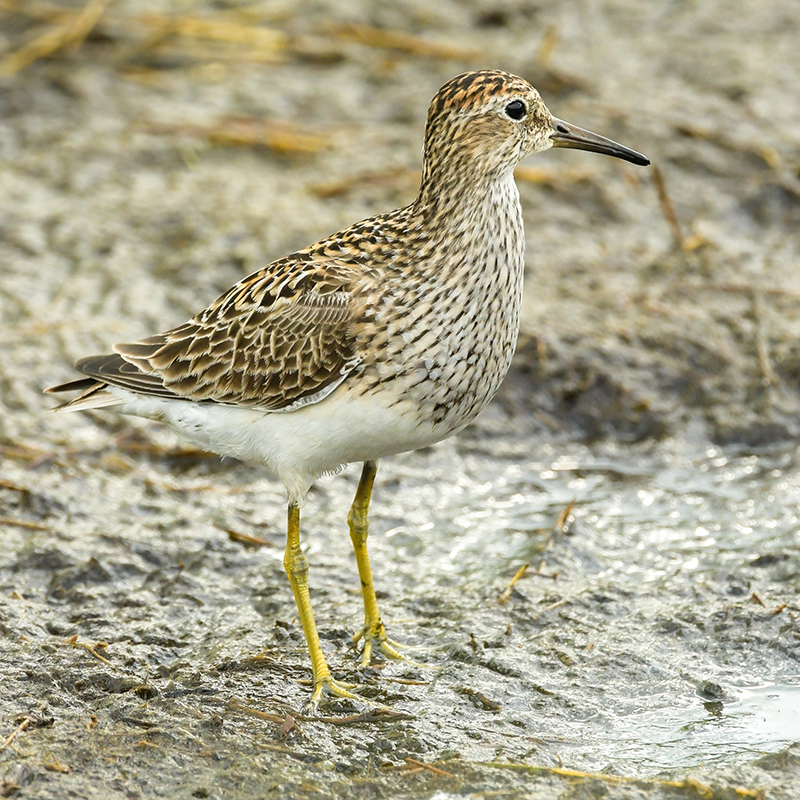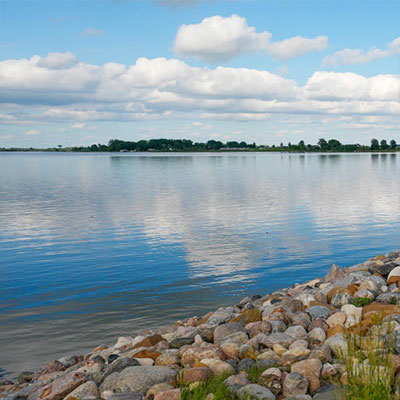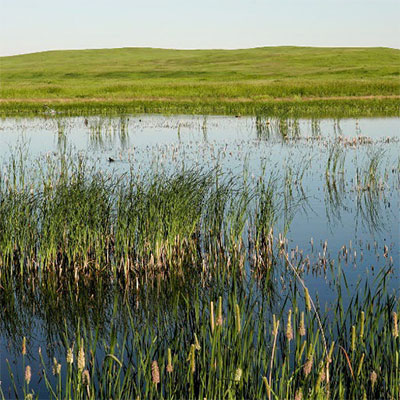Pectoral Sandpiper

NDGF
L 8.75”, WS 18”, 2.6 oz. Dense streaking on breast that abruptly ends at white belly, greenish legs, slightly decurved bill.
Status in North Dakota
Migrates through North Dakota in early April through early June, and early July through late October. Occurs in ND more frequently in late summer/fall stopover than spring.
Reason for SWAP Designation
At-risk based on expert review (SGCN c.).
Holarctic, large population.
ND hosts >5% (5.89) of global population in the post-breeding migration season.
The peak week for Pectoral Sandpiper migration in ND (~26-July) hosts >15% (18.99) of the global population.
The Pectoral Sandpiper trend is uncertain, but concern elevated for species in recent years.
Threats
Loss and degradation of wetlands, drainage and wetland consolidation.
Loss of habitat on the breeding and wintering grounds and amplified effects of climate change in arctic and coastal habitats.
Hyperabundant geese populations alter tundra habitat and may limit the availability of nesting habitat for artic-breeding shorebirds.
Loss and degradation of migratory stopover habitat and impacts of human activity at important stopover areas such as the Lower Mississippi Valley and Texas Gulf Coast.
Increasing applications of agrochemicals and adverse impacts to water quality, the wetland vegetative community, and the aquatic invertebrate community.
Pectoral Sandpipers may be exposed to high concentrations of synthetic insecticides in non-buffered cropland ponds during the spring migration.
More frequent or intense harmful algal blooms.
Aquatic nuisance species spreading and damaging wetland ecosystems.
Research and Monitoring
Habitat requirements and demographic studies have been broadly researched on the breeding grounds.
Information lacking on migration strategies, stopover sites, and wintering behaviors.
Multiple large-scale shorebird monitoring programs are key sources of information on distribution and population trends.
However, minimal focus has been directed at research or monitoring migrant shorebirds in ND.
Management Recommendations
- Maintain wetland complexes.
- Conserve shallow, working wetlands in cropland.
- Plant vegetative buffer strips around wetlands in cropland.
- Identify and target high priority landscapes, habitats, and stopover sites for protection.
- Conscientious and appropriate application of agrochemicals.




